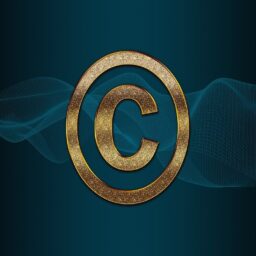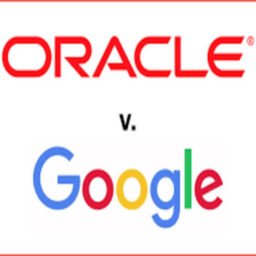INTRODUCTION
Recently,[1] on 30th March 2021 the Government of India has issued Copyright (Amendment Rules, 2021) vide Gazette notification under reference G.S.R. 225(E). The Copyright rules, 2013 were last amended in the year 2016.
OBJECTIVES
- To bring equality among the existing rules with the parent act of copyright.
- To ensure smooth and flawless compliance regarding technological advancements by making the electronic modes as the primary mode of communication.
- [2]To deal with the undistributed royalty amounts and use of electronic and traceable payment methods while collection and distribution of royalties
- To reinforce transparency in the working of copyright societies.
IMPLEMENTATIONS
- Appellate Board
In the recent amendment of copyright rules, 2013, the word “Copyright Board” has been replaced with the word “Appellate Board”. The main objective behind this change is to establish a balance between the copyright rules and the copyright act. In Rule 2(b), the “board” is denoted as “Appellate Board” which is provided in section 11 of the copyright act, 1957. Section 11 states that the Appellate Board shall exercise the Jurisdiction, Powers, and authority as per the act. Earlier, there was no introduction of the Appellate Board in the Copyright Rules, 2013; therefore, this change has become a necessity to bring parity between the copyright rules and the parent act.
- Appointment of the chairman and other members of the Board
Rule 3 of the copyright rules, 2013 is substituted in Chapter II which confer about the appointment of chairman and other members of the Board as per the provisions of the Trademarks Act,1999. The addition of rule 3 provides the entire jurisdiction of appointment, permission to resign, and disbarment to the central government. The rule further confers about the eligibility criteria of the Chairman or the other members of the Board and provides the benefit of re-appointment after the expiry of their appointment period.
- Communication through electronic means:
Rule 82 of chapter XVII encourages communication through electronic modes. It ensures that every written document or notice for application shall be communicated through the digital method. However, the method of communicating through the registered post is still available. The word “through electronic means” is enumerated in rule 7(1) which states that “a copy of the application under rule 6 along with the documents relied upon shall be served on the copyright owner through electronic means or by registered post”. It is also enumerated in rule 18(1) and rule 39(1) for the same purpose. This rule provides the benefit to use both the method for communication or transfer of written documents but the electronic mode is considered to be the primary mode of communication to ensure a smooth and flawless process in this digital era and to comply with the technological advancements.
- Journal Publication:
The new amendment rules have introduced copyright journals. It has substituted the word “published in the journal” for the word “notified in the official gazette”. The copyright journal has been introduced in rule 7(5), rule 11(6), rule 18(5), rule 23(1), rule 27(2), rule 29(1), rule 31(2), and rule 39(5) to publish the grant of every license for copyright registration or notice for making cover versions in the copyright journal, the official website of copyright and the Board. Earlier, the publication was being held through the official gazettes which publish new laws, legal notices, and court notices. However, the introduction of copyright journals has been revealed to be a crucial footstep towards technological advancement.
- Copyright Society:
- The new amended rules have brought some changes in chapter XI which confers about the “Copyright Societies”. It introduced a time limit which has been extended from 60 days to 180 days for the central government to give a response regarding the application for registration in copyright society. The main purpose of this rule is to make the examination more comprehensive. Rule 49(1) states that [3]“when the registrar of copyright submit the application for registration of a copyright society, the central government may either accept it or reject it within 180 days.”
- The word “not below the rank of a Deputy Secretary” has been omitted in Rule 50(2)(a).
- In Rule 55, there is a new addition of Sub-Rule (3) which provides a benefit of payment through electronic modes and a traceable system to trace the made payments in relation to the collection of royalty and distribution of royalty. The sub-rule (2) also substituted Rule 71 to Rule 67 for the purpose of the welfare scheme pertaining to the distribution of copyright society. This change aims to encourage accountability and transparency in the copyright regime.
- The rules amended in Rule 58(11) ensures to keep a separate account of those royalties of a copyright society that remains undistributed or of those whose relevant author remains unidentified.
- There is an addition of Rule 59(7) for the term of elected Governing Council and the Chairman which is two years and provides the eligibility for re-election.
- Annual Transparency Report:
For the reinforcement of transparency, the new amended rules have introduced rule 65A which states about Annual transparency report. It has also been enumerated in rule 62(ix) and rule 65(viii).
A report must be drawn by copyright society and make public a special report which would be referred to as the annual transparency report for each financial year. The annual transparency must get published on the copyright website and must remain available on the website for a minimum of three years.
- Registration of computer programme:
A new rule has been enumerated in chapter XIII which largely reduces the compliance requirements for registration of software, as earlier, the applicant needs to submit the entire source and object code. However, the applicant now can file “[4]at least first 10 pages and last 10 pages of the source code, or the entire source code if less than 20 pages, with no blocked out or redacted portions.”
- Fees:
Rule 83 of chapter XVII confers about “fees” which need to be paid with regards to the applications or any matters as prescribed under the Act and the rules in the second schedule. This rule provides that the fee can be paid electronically. It also suggests paying the fees through demand draft or by bank’s cheque.
COMMENTS
The new amendment of The Copyright Rules, 2013 has enumerated, substituted, and omitted various rules to meet the main objectives.[5] The amendments also have harmonized the Copyright Rules with the provisions of the Finance Act, 2017. After scrutinizing every new rule and the previous rules, it can culminate that the new rules have met the main objectives for bringing parity, a smooth and flawless process through digital means, reinforcing transparency and accountability, and removing the unnecessary rules. Therefore, the new change has been evinced as a positive change in the copyright regime.
Author(s) Name: Swetalika Das (Student, Amity University, Kolkata)
[1] The Copyright Rules,2013, available at https://copyright.gov.in/Copyright_Rules_2013/index.html , last seen on 20.06.2021
[2] The Copyright Rules,2013, available at https://copyright.gov.in/Copyright_Rules_2013/index.html , last seen on 20.06.2021
[3] Rule 49(1) of The Copyright Rules,2013
[4] Rule 70(5) of the copyright rules,2013.
[5] Copyright (Amendment) Rules,2021, available at https://pib.gov.in/PressReleasePage.aspx?PRID=1710417 , last seen on 20.06.2021









